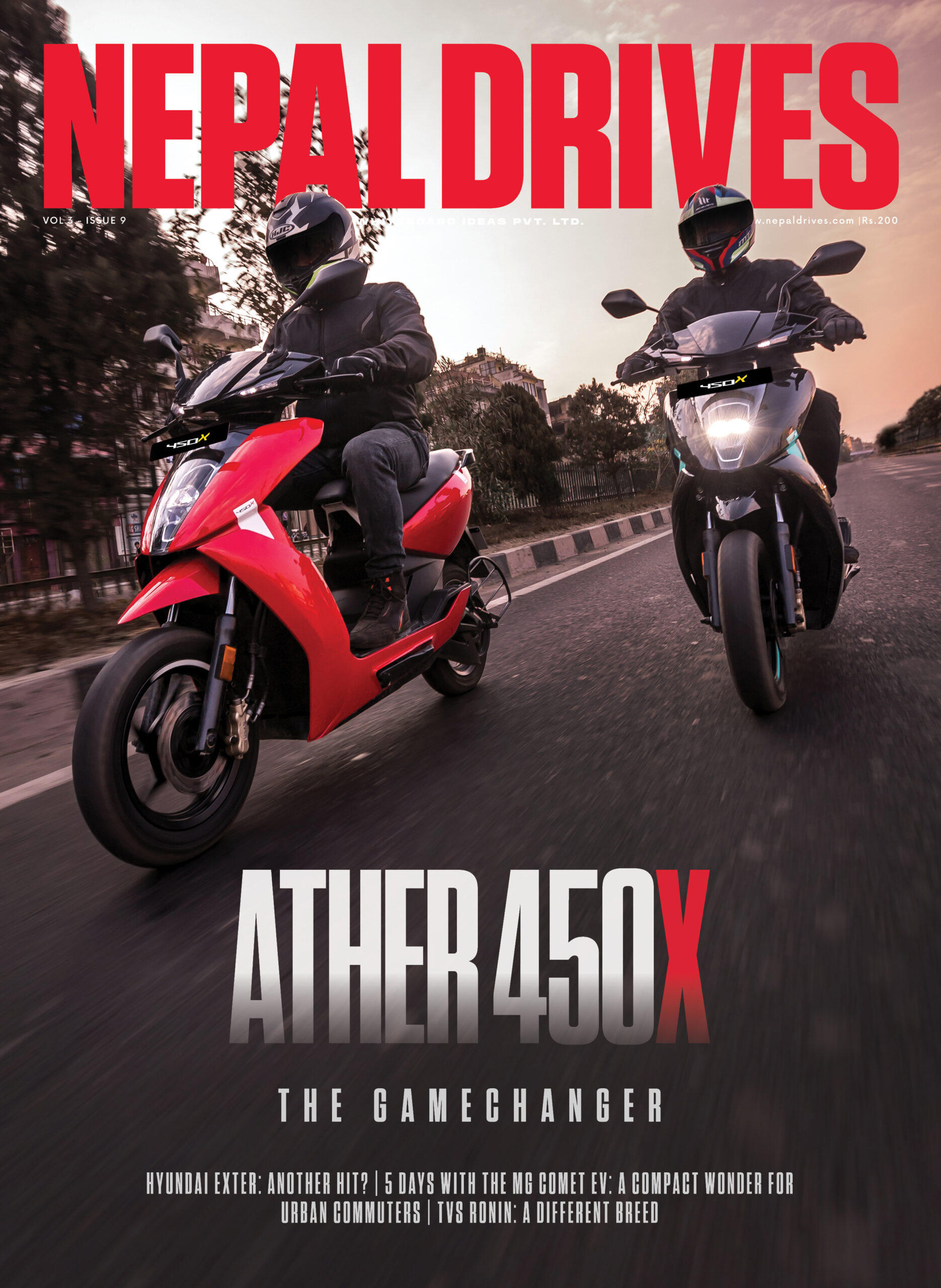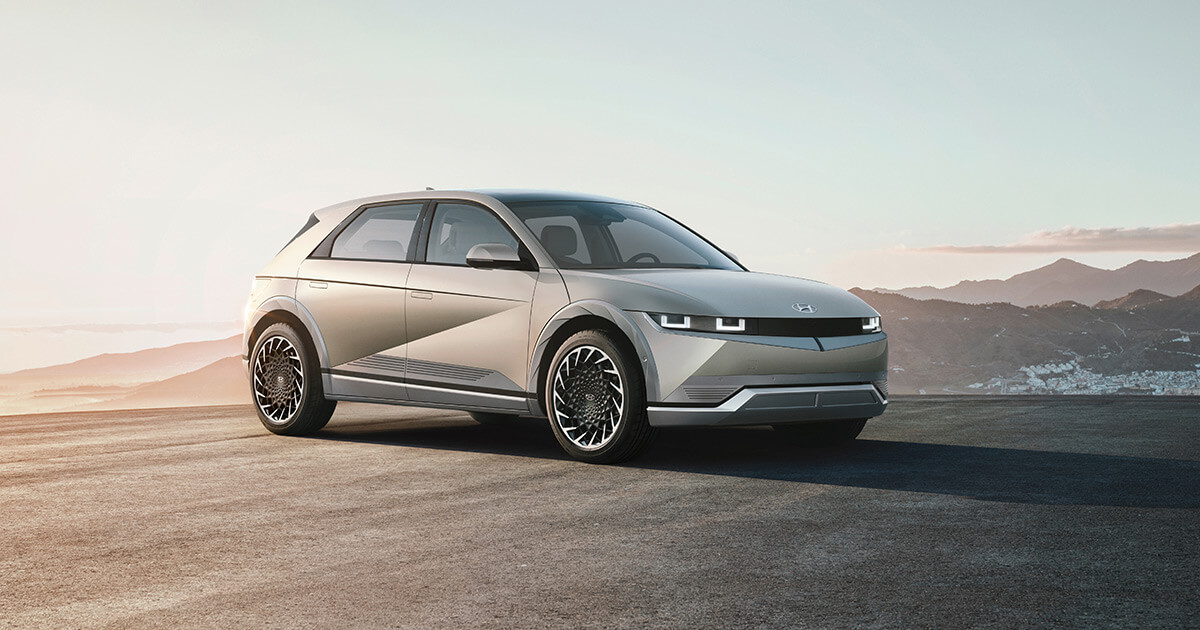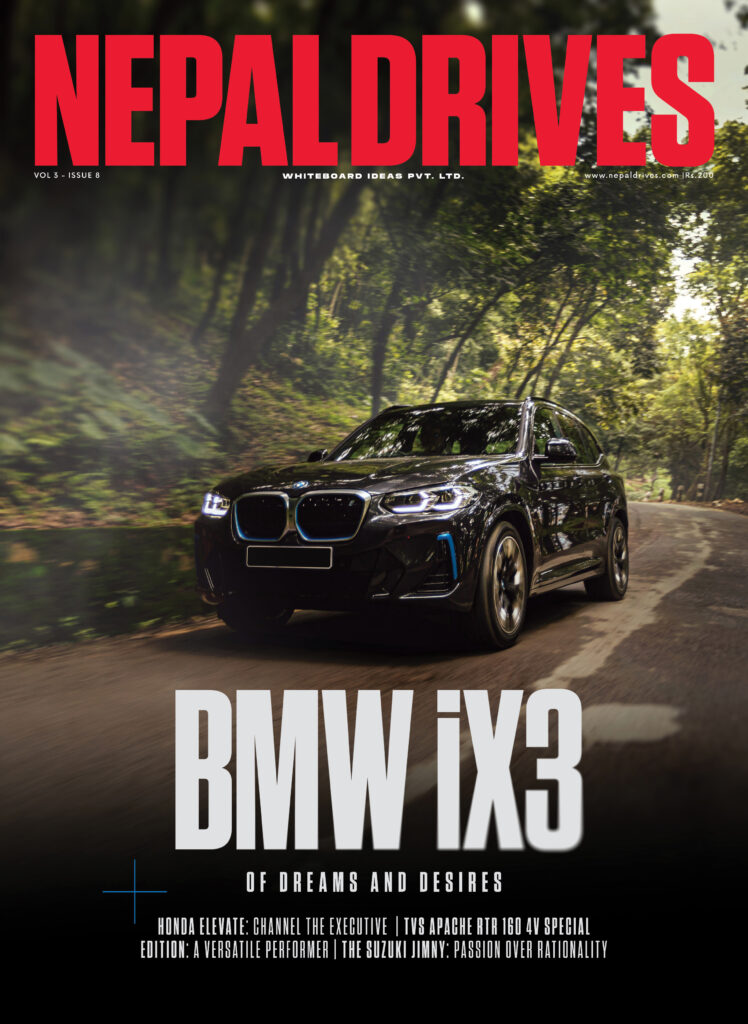Volkswagen Taigun: Hustle Mode On
Share



The Volkswagen Taigun is the newest product to arrive for the German brand in Nepal. What is essentially a T-Cross for the Indian Subcontinent, the Taigun is VW’s foray into the midsize/Crossover SUV market. The Taigun is slightly late to the party since Skoda managed to deploy the Kushaq into the market much earlier. Nevertheless, Pooja International Pvt. Ltd got their #hustlemodeon and ushered in the Taigun.
The Taigun is Volkswagen’s first car to be built on the new MQB-A0-IN platform and it is set to go up directly against the likes of the Hyundai Venue, Kia Sonet, Tata Nexon, and the aforementioned Skoda Kushaq which shares the same MQB-A0-IN platform. Clearly, the Taigun is up against some very worthy contenders. So what does it bring to the mix? We find out.

Exterior
As you would have expected, the Volkswagen Taigun is distinctly Volkswagen. The new VW logo sits on the center of a slim front grille. Chrome has been tastefully used in the grille and silver cladding on the bumpers. The front end gets LED daytime running lights and LED projector headlamps.
The profile gets plastic cladding which adds to the SUV styling of the Taigun. Other style elements on the profile include 17-inch alloy wheels, contrasting black roofs, and roof rails. A strong character line runs across the side and integrates into the rear LED tail lamps.
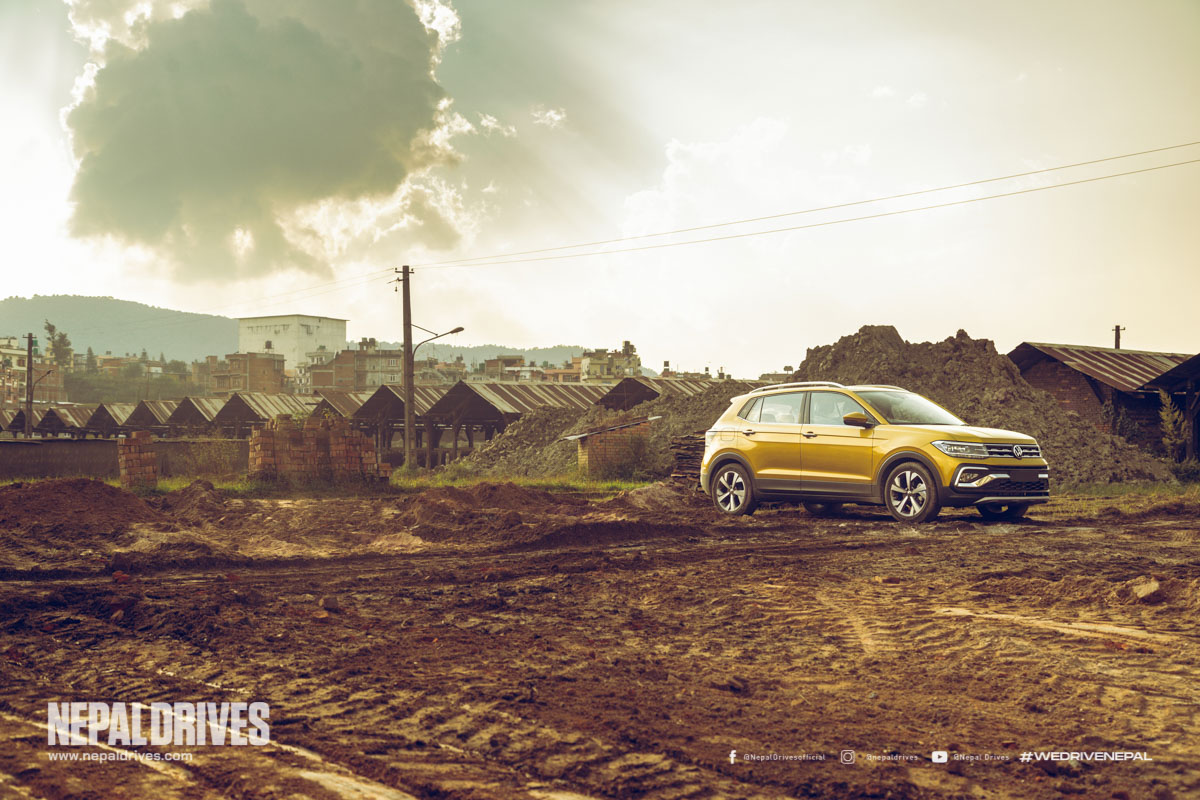
In fact, the rear sports an Infinity LED tail lamp which is segment-first. It runs across the length of the rear and the VW logo sits in the center, giving it a bold style. The Taigun badging is tastefully placed centrally above the rear bumper. Silver claddings also find their way onto the rear bumper.

The Volkswagen Taigun feels well built. The clean-cut lines and smooth styling provide an elegant appeal for the Taigun. While the Taigun does have some SUV-like traits, it still falls short of looking like a proper SUV. It has a monocoque construction that is built on the MQB A0-IN platform which is a variant of the modular MQB platform.
Interior
Inside, the cabin of the Taigun feels spacious. Once on the driver’s seat, you can adjust your personal seating preference via manual adjustment and set the rake and reach for the steering wheel. The steering wheel itself has a flat bottom, which is nice. There is plenty of space for all occupants, with generous knee and headroom. You can fit 3 people in the back seat if the need arises. However, more than 2 passengers in the rear seat will be a snug fit, especially if the passengers are slightly heavier set.
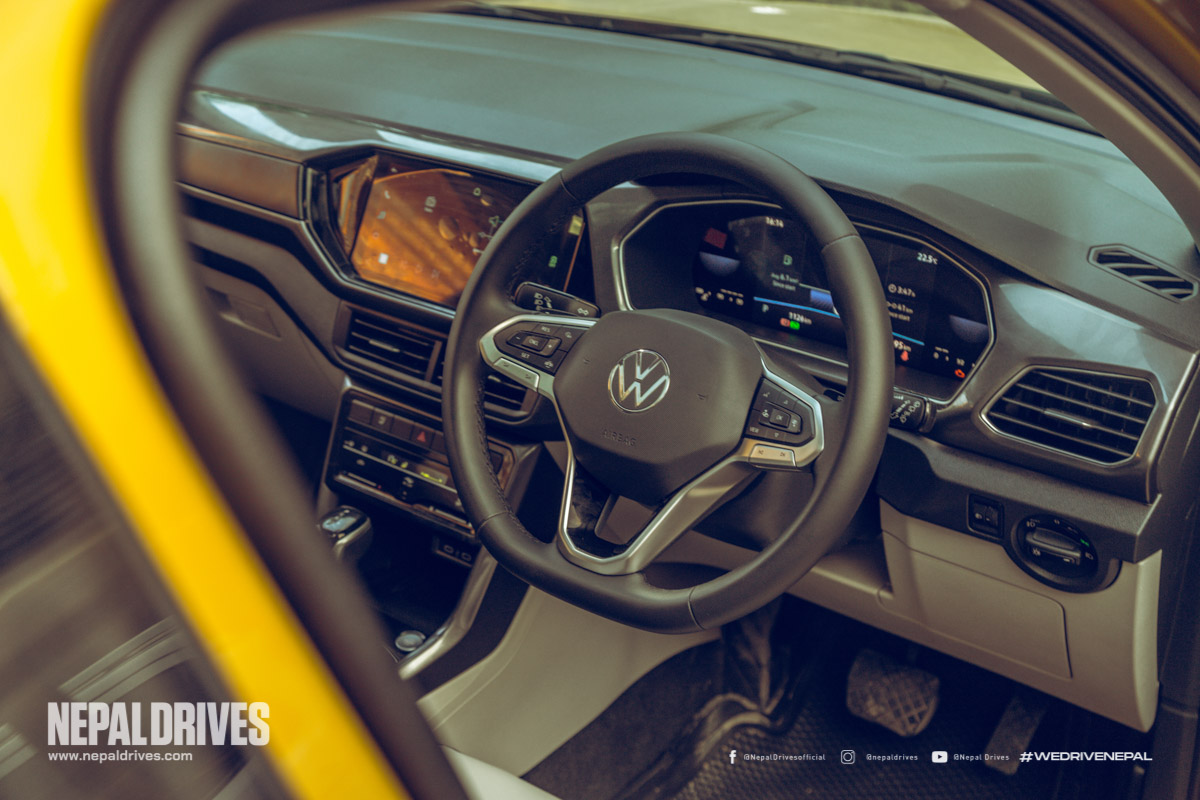
Ergonomically, everything is where you’d expect it to be and the entire experience feels rather user-friendly. Everything is well within reach and the visibility you get out of the driver’s seat makes life easier.
You get a black and beige interior scheme with a combination of shiny plastic and silver accent. The 10” touchscreen head unit in the center is clearly visible and easy to use. As you’d expect, it is compatible with both Android Auto and Apple CarPlay. Lower on the central console is the A/C control unit and controls for the ventilated seats. The sliding touch controls for air conditioning are decently responsive but we would have liked physical dials and buttons would have made things easier when you’re driving.
Furthermore, you get a sunroof. Although it isn’t panoramic, it helps brighten up the cabin. Rear seat passengers get their own aircon vents with charging ports underneath them. You can pull down the center armrest from the center seat.

Volkswagen has left no stone unturned to provide the Taigun with adequate safety features and functionality. While the Taigun features their new MQB A0-IN platform and no official safety tests have been conducted, it would be safe to assume it will score high marks when it comes to safety. Taigun has a long list of safety features and is backed by the reputation of Volkswagen for offering cars that are built solid. Nevertheless, the mid-size SUV gets features like electronic stability control, up to 6 airbags, multi-collision brakes, auto-dimming IRVM, Hill hold control, park distance control & rearview camera, tire pressure deflation warning, and 40+ safety features.
Boot space comes in at a sizable 385L (comparable to the 385L of the Kushaq, 392L of the Sonet, and slightly lower than the 433L of the Seltos). It is extendable up to 1405 L.
Performance
In Nepal, the Volkswagen Taigun comes with a 1.0 TSI petrol engine that produces a maximum power output of 114 BHP and 178 Nm of peak torque. With this, you get an option of a 6-speed manual transmission or a six-speed torque converter automatic gearbox.
To bring the engine to life, you press the engine start button that is placed right ahead of the gear shifter. The three-cylinder 1.0L engine is silent and hints at the refinement of the unit. In fact, it is so well refined that the usual three-cylinder thrum is very minimal (unless you rev really hard).
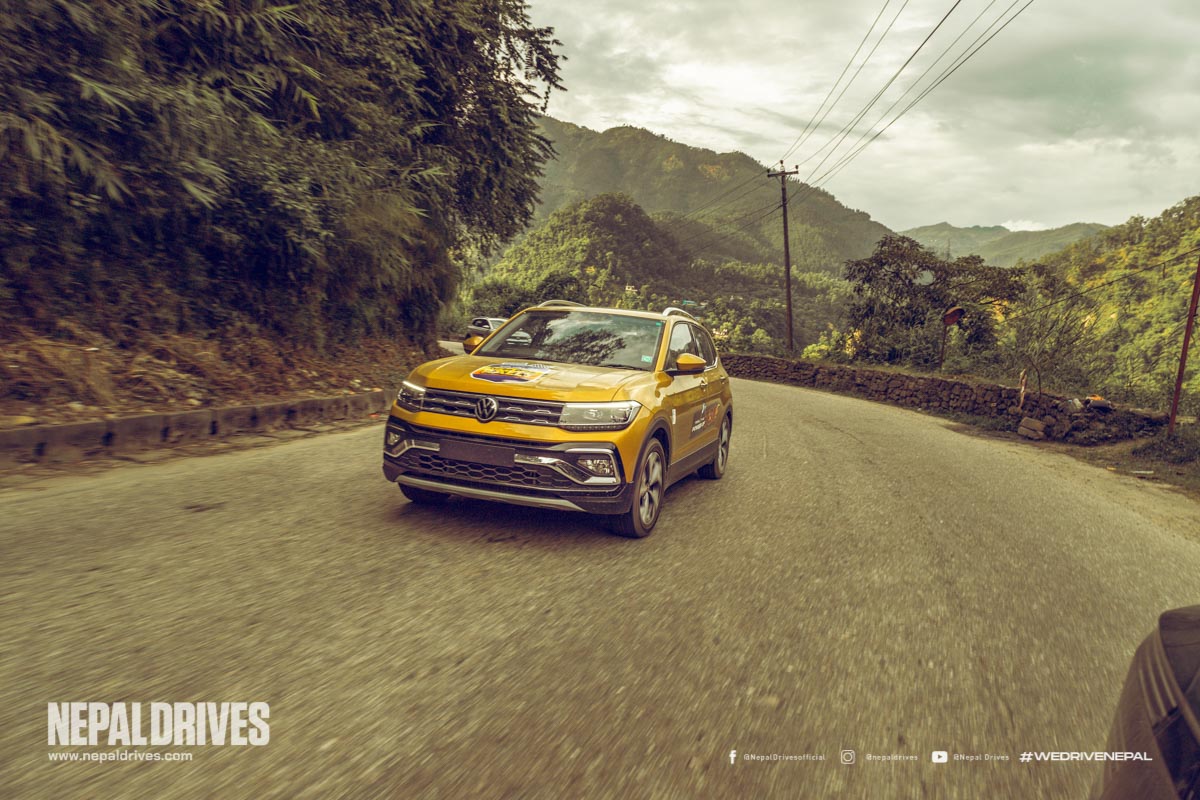
Throttle response is quick and the Taigun rolls off the line with ease. It picks up pace quickly and the drivability is decent. In the city, it keeps up with traffic well, and when you need a little more juice you can switch to S mode and it spruces things up. It performs best when you keep the revs above 1800 rpms, and it finds its groove when the boost kicks in.
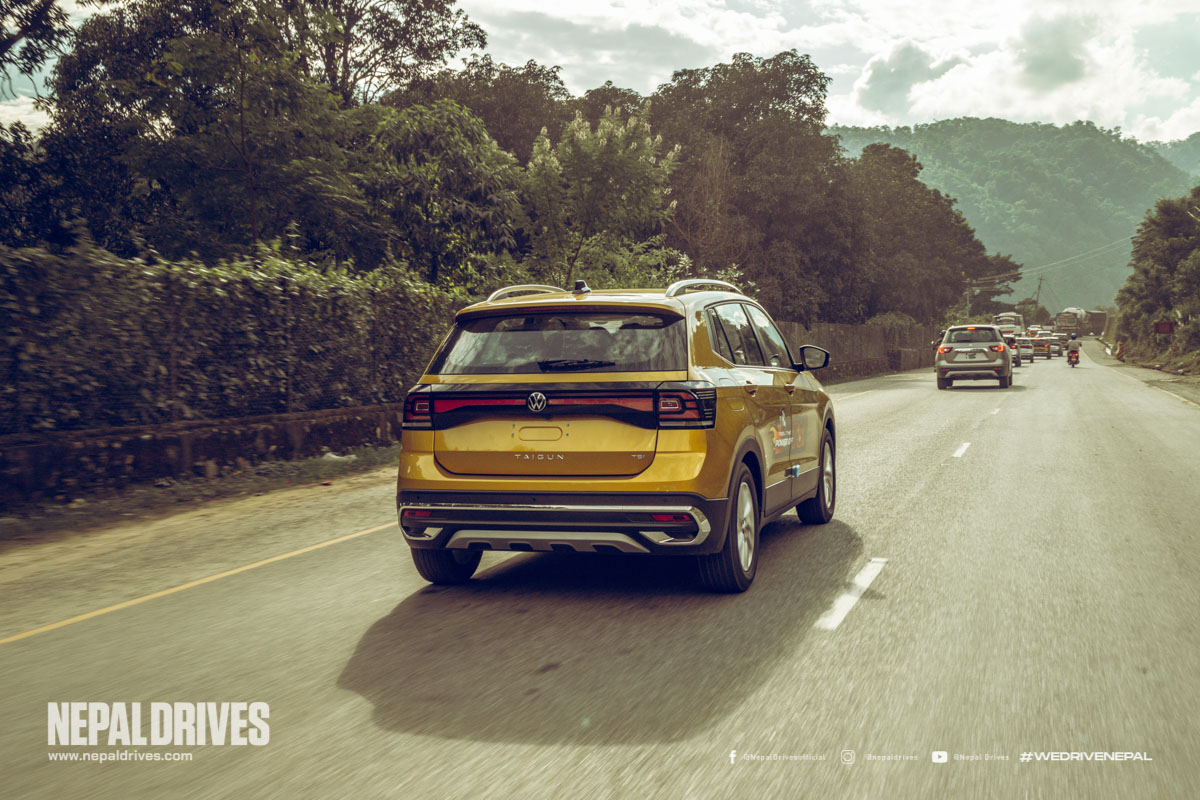
It manages to keep its calm on the highways as well. You need to keep in mind that it still is a small engine under the hood, so the spritely nature does peter out at higher speeds. Nevertheless, it can still hold its own on the highways. The Volkswagen Taigun also navigates the bends with enthusiasm. The MQB A0 IN platform is 30% stiffer than the outgoing Polo’s and it shows in the way it handles the corners. The steering feels well-weighted which significantly improves the driving experience.
Verdict
Driving the 1.0 TSI was a lot of fun. It is an exciting car to drive and would work well as a daily driver. The Taigun comes with plenty of features, which has become the norm nowadays in this highly competitive segment. With the top trim of the Taigun you get premium kits like auto LED headlamps, auto wipers, ventilated front seats, sunroof, digital instrument cluster, and six airbags, among other things and it makes it a likable prospect for buyers. It will also set you back Rs. 72 Lakh.

We would have loved to have the 1.5 TSI on offer in Nepal, but due to fuel incompatibility issues, it doesn’t look like that’s going to happen anytime soon. Nevertheless, even the 1.0L TSI Volkswagen Taigun shows significant potential. Volkswagen’s strong reputation and goodwill definitely add value not only to VW loyalists but also to newer customers.



